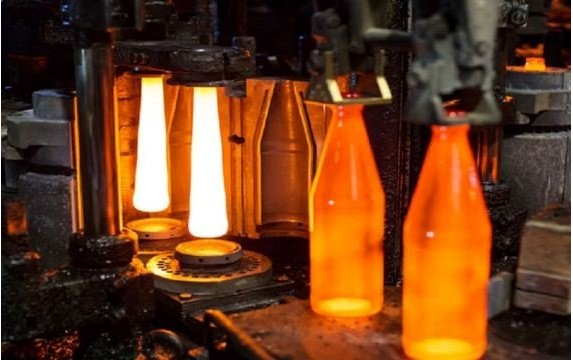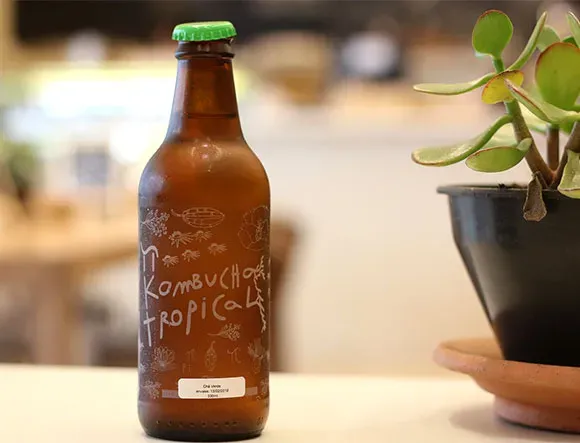Discover why glass bottles consistently outperform other packaging for product integrity and consumer appeal. This article explores the essential qualities of glass – like purity preservation and premium feel – while acknowledging how meticulous manufacturing processes, including precise heat control, mold operation, and material quality, are critical to achieving the consistent wall thickness that underpins glass’s renowned strength and functionality.
Uneven Heat in Bottle Making
Temperature inconsistencies during glass bottle production directly cause wall thickness variations. When furnace temperatures fluctuate—even within a range of ±15°C—molten glass develops uneven viscosity properties. This thermal instability alters the glass’s flow behavior, resulting in bottles with inconsistent wall thickness that compromises structural integrity and product quality.
How Heat Variations Affect Bottle Thickness
Hot spots within furnaces reduce glass viscosity, causing material to flow more readily and form thinner walls. Conversely, cooler zones maintain higher viscosity where glass resists flow, creating thicker sections. Temperature differences between glass drops entering molds create uneven cooling rates, generating internal stress that manifests as thickness inconsistencies and potential micro-cracks. Mold surface temperature variations further impact results: glass contacting hotter mold areas cools slower and stretches thinner, while glass on cooler mold sections solidifies faster into thicker walls.
Specific Temperature-Related Issues
Improper cooling airflow settings frequently lead to overheated neck rings, distorting thickness distribution. Inconsistent temperatures often produce irregularly shaped gobs – particularly overlong glass drops – that form bottles with uneven walls. Poor thermal regulation at shearing points and across mold surfaces creates stress concentrations that amplify thickness variations. Excessively high forming temperatures risk premature bottle release before complete solidification, causing warping or collapse. Soft bottle bases remain especially vulnerable to conveyor belt deformation, resulting in uneven foundations.
Why Temperatures Change
Temperature inconsistencies typically stem from equipment malfunctions or operational errors. These issues often persist across multiple production cycles, establishing predictable patterns of thickness variation in finished bottles.
Faulty Glass Molding: Why It Makes Bottle Walls Uneven
Defects in the glass molding process frequently create uneven wall thickness. These issues occur at various production stages and significantly compromise final product quality.
Mold Closing and Neck Ring Issues
Improper mold sealing due to carbon buildup or glass debris prevents uniform closure, directly causing wall thickness variations. Worn or contaminated neck rings develop gaps during closing operations, resulting in inconsistent thickness distribution. Regular cleaning and timely replacement of neck rings are essential maintenance practices.
Pressure and Timing in Glass Forming
Insufficient blank closing pressure, particularly in press-and-blow systems, leads to unbalanced mold filling and vertical thickness differences. Excessive plunger pressure forces molten glass to distribute unevenly, creating localized thick and thin zones. Reducing plunger pressure typically resolves this imbalance.
Equipment Condition and Wear
Worn blank supports or mold mechanisms impair proper glass distribution, causing unpredictable thickness variations between production runs. Prolonged mold use gradually enlarges cavities, allowing excess glass flow that creates thick spots and compromises dimensional accuracy – a critical quality concern.
Feeder, Gob Temperature, and Air Pressure Factors
Non-uniform or improperly set feeder temperatures alter glass flow into the mold. When the gob temperature is too high or low, inconsistent viscosity results in greater thickness variation. Incorrect blowing air pressure further distorts glass distribution during bottle formation.
Machine Timing and Speed Problems
Incorrect machine timing or imprecise gob loading positions result in inconsistent initial glass distribution across molds. These cumulative positioning errors manifest as visible thickness variations. Increasing machine speed often improves flow characteristics when slow cycling causes uneven material distribution.
Design and Fit Issues
Mold design flaws frequently cause thickness inconsistencies. An oversized blank mold recess for neck rings or undersized neck rings themselves disrupt proper glass distribution. Similarly, mismatched blank volumes—where mold capacity doesn’t align with gob weight or plunger dimensions—consistently produce irregular wall thickness throughout bottles.
Solutions for Molding-Related Thickness Variations
Adjusting feeder and gob temperatures improves material flow characteristics. Regular inspection and replacement of significantly worn neck rings prevents sealing gaps. Reducing excessive pressing pressure balances glass distribution. Consistent neck ring cleaning eliminates carbon buildup affecting closure. Optimizing blank closing pressure ensures complete mold filling. Prompt repair of worn support linkages maintains proper alignment. Stabilizing the Lehr temperature ensures proper annealing conditions that relieve internal stresses. Fine-tuning air blow pressure completes forming without distortion.
Consistent equipment monitoring combined with precise process adjustments remains fundamental for minimizing thickness variations and enhancing bottle quality.
Poor Mold Conditions: Impact on Glass Bottle Wall Thickness
When it comes to glass bottle production, poor mold conditions frequently lead to uneven wall thickness. If the mold’s temperature isn’t consistent, the glass cools at varying rates in different areas. Take a scenario where part of the mold is hotter—glass near that spot cools more slowly, which tends to make the wall thinner there. On the flip side, if a section of the mold is cooler, the glass solidifies faster, resulting in a thicker wall in that area. From what’s observed, this temperature disparity within the mold directly causes inconsistent thickness in the bottle, and the unevenness is often visible to the eye. It’s a matter of how mold temperature stability affects the glass’s cooling process and, in turn, the final wall thickness distribution.
Mold Cooling and Temperature Control
When a mold doesn’t cool uniformly, the glass often fails to take the proper shape. For example, during the start or end of a production run, if the mold gets too cold, “cold spots” can appear on the bottles. Observations show these spots are typically thicker, which weakens the overall bottle structure.
Issues with mold temperature control mean the glass might not fill the mold correctly, leading to dents or sunken areas. These thin or indented spots not only affect the bottle’s appearance but also reduce its strength and durability. It’s a practical problem where inconsistent cooling throws off the glass’s formation, impacting both the bottle’s aesthetics and its functional lifespan.
Other Mold-Related Issues Affecting Bottle Thickness
Beyond cooling and temperature, other mold problems can cause uneven bottle thickness. For instance, improper mold lubrication prevents the glass from flowing smoothly, which leads to inconsistent thickness as the glass sets.
Another issue is incorrect gob loading—when the molten glass blob is placed unevenly into the mold, it can pool in certain areas. This pooling causes some parts of the bottle to end up thicker while others become thinner. Similarly, mold release timing plays a role: if the bottle is removed before it fully sets, its shape distorts, leading to inconsistent thickness. In practice, these factors highlight how mold maintenance and operational precision directly impact the final bottle thickness.
Importance of Professional Mold Operation
To maintain consistent bottle quality, precise and continuous control of mold temperatures throughout production is essential. This requires experienced engineers who can monitor and adjust mold performance in real-time. Proper mold operation, regular maintenance, and prompt issue resolution play a key role in reducing thickness defects. In practice, these measures ensure that glass bottles are not only structurally strong but also reliable—highlighting how professional mold operation directly impacts both product quality and manufacturing efficiency.
How Raw Material Quality Affects Glass Thickness
Impurities in silica sand frequently cause bubbles or streaks that compromise both appearance and wall thickness uniformity. Variations in recycled glass (cullet) batches – particularly when contaminated or poorly sorted – create inconsistent material flow during forming. This commonly results in localized thick and thin areas within bottle walls.
Critical Material Considerations
Low silica sand purity introduces elements like iron that disrupt melting behavior and cause uneven wall distribution. Inconsistent cullet composition from multiple suppliers significantly alters melt flow characteristics, producing visibly different thicknesses between bottles. Excessive moisture generates steam bubbles during melting, creating weak spots and gradual thickness inconsistencies. Uncontrolled chemical composition causes uneven thermal expansion during heating, leading to unpredictable thickness variations and structural weaknesses.
How Impurities Cause Thickness Problems
Impurities in silica sand create bubbles or streaks, leading to inconsistent thickness. Variations in cullet make the glass melt unpredictable, resulting in uneven walls. Excess moisture in raw materials causes bubbles during forming, disrupting glass flow and thickness control.
Essential Quality Control Measures
Regular chemical analysis of silica sand and cullet batches prevents composition-related thickness issues. Particle size distribution testing ensures uniform melting characteristics and promotes even glass flow. Comprehensive purity checks for metallic contaminants and organic materials prevent defects affecting thickness. Physical property testing verifies material behavior under production conditions to avoid unexpected variations.
Impact of Poor Raw Material Quality
Substandard materials lead to issues like iron-rich sand causing discoloration and thickness variations, or unsorted cullet creating stress points that result in inconsistent cooling. These cause top-to-bottom thickness differences in bottles.
In short, raw material quality is as important as molding and heating. Even small defects harm uniformity, so regular checks and quick fixes are needed for consistent thickness.
Timing Issues in the Manufacturing Process
Precise timing synchronization throughout production is critical for uniform bottle wall thickness. When timing drifts during key forming stages – particularly mold loading or shaping steps – glass distribution becomes uneven, consistently resulting in thickness defects.
Common Timing Problems in Glass Bottle Manufacturing
Observed timing-related defects often stem from incorrect machine setup: misaligned loading positions or timings make molten glass flow into molds improperly, leading to noticeable thickness differences on bottle sides. Sync issues in blank closing mechanisms affect mold filling consistency—even delays of mere fractions of a second impact thickness. Neck ring closing delays from carbon buildup or residual glass cause unexpected thickness variations in the neck area. In press-and-blow machines, off-kilter plunger timing or pressure pushes glass unevenly, while misaligned finish and locking thimbles create wall thickness mismatches. Worn mold linkage parts also throw off opening/closing sequences over time, causing batch-to-batch thickness inconsistencies.
Plunger and Mold Synchronization Effects
Poor plunger-mold coordination causes uneven material displacement – excessive pressure creates bulges while insufficient force leaves underfilled zones, both causing significant thickness differences. Low blank mold closing pressure in press-and-blow systems consistently yields malformed parisons with inherent thickness flaws. Worn support components introduce incremental timing variances that progressively distort glass distribution patterns across production batches.
The Role of Preventative Maintenance and Thermal Timing
Preventative maintenance is key—manufacturers with strict schedules see fewer timing issues and more consistent bottles. Regular upkeep keeps moving parts synchronized, reducing uneven thickness risks. Thermal timing is equally critical: sudden temperature shifts over 42 degrees disrupt glass thermal expansion, inducing internal stress that makes thickness control impossible and raises breakage risks.
In practice, precise timing management—across machine operation, plunger action, mold closing, and temperature control—is essential to prevent uneven thickness. Even minor timing flaws have significant impacts, making routine checks and process discipline non-negotiable.
Glass bottles excel in product integrity, premium appeal, and sustainability. Ensuring consistent wall thickness—key to their strength—requires precise control over heat distribution, mold conditions, raw material purity, and mechanical timing, honed through decades of expertise. At Xilong, our precision manufacturing and strict quality checks guarantee reliable, flawlessly consistent bottles. Elevate your product with our high-quality glass solutions. Contact us today to discuss how our expertise can make a difference.



